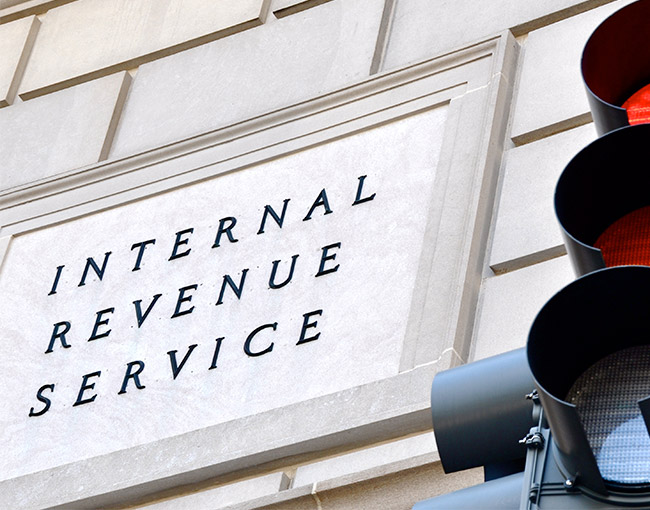With required reporting under the Affordable Care Act (ACA) looming, employers should be aware of the latest guidance from the IRS. As a reminder, information reporting requirements apply to all employers who are members of an “Applicable Large Employer” under the ACA, generally an employer with 50 or more full-time and full-time equivalent employees in the previous year (including employees of related companies), and small employers that self-insure coverage. The IRS recently released final instructions for Forms 1094-B and 1095-B and Forms 1094-C and 1095-C. The first required filing for these forms occurs in January 2016 with respect to coverage for 2015.
Background
As employers have no doubt discovered by now, complying with the ACA reporting requirements is a complex task. In general, every provider of “minimum essential coverage” to an individual must file an information return reporting the coverage. In general, insurers will use Form 1094-B to submit Forms 1095-B, and applicable large employers will use Forms 1094-C and 1095-C to report the information about offers of health coverage and enrollment in health coverage for their employees. Applicable large employer members offering self-insured group health coverage generally will report information about the coverage on Form 1095-C (Part III) instead of Form 1095-B. (An employer who offers self-insured coverage to non-employees -- e.g. retirees, COBRA participants, or non-employee directors -- may use Form 1095-B to report coverage of any individual who enrolled in the coverage for one or more months but who was not an employee for any month during the year.) Information reported on the forms will be used to enforce employer mandate penalties, as well as individual mandate and tax credit eligibility rules.
A full discussion of the ACA reporting requirements is beyond the scope of this alert. If you have questions regarding ACA reporting, please contact any member of our Employee Benefits Group. In addition, the IRS website contains a helpful page with links to information on the ACA as it applies to employers.
The IRS previously released drafts of the forms and related instructions. Employers and their advisors have been reviewing the drafts while preparing to file the appropriate forms. Employers will be relieved to know that the final forms and instructions generally followed the drafts. However, employers should take note of some changes in reporting for specific circumstances, discussed below.
Changes in the final instructions
Changes in the final instructions primarily impact reporting for COBRA coverage for terminated employees, multiemployer plan coverage and health reimbursement arrangement (HRA) coverage.
COBRA coverage. Under the final instructions, an offer of COBRA coverage to a participant who has terminated employment is not considered an offer of coverage for reporting purposes. All terminated COBRA participants are reported the same: “1H” (“no offer of coverage”) on Line 14, nothing on Line 15 and “2A” ("employee not employed during the month”) on Line 16. To report for the actual month of termination of employment (when the employee was an employee and covered for only part of the month) the employer puts “1H” on Line 14 and “2B” ("employee not a full-time employee”) on Line 16. Under the draft instructions for Form 1095-C and FAQs issued by the IRS, reporting COBRA coverage for terminated employees for months after the termination would have depended on whether the employee actually enrolled in COBRA.
Multiemployer plan relief. An employer is treated as offering coverage to an employee if the employer is required by a CBA to make contributions for that employee to a multiemployer plan regardless of whether coverage is actually offered to the individual, provided certain conditions set out in ACA regulations are met. The final instructions clarify that employers claiming the relief should use code “1H” (“no offer of coverage”) on Line 14 and “2E” (“Multiemployer interim relief”) on Line 16 for any month in which the employer claimed the benefit of the relief. The draft instructions proved confusing because they implied that code “2C” (“Employee enrolled in coverage offered”) trumped all other codes for Line 16. The final instructions clarify that “2E” trumps “2C” for Line 16. IRS officials are careful to note that the safe harbor is available only if the employer can demonstrate that the multiemployer plan offers, to individuals who meet the plan’s eligibility conditions, coverage that: (i) provides minimum value, (ii) is affordable and (iii) covers dependents, in accordance with ACA requirements.
HRA coverage. Lastly, the final instructions eliminate potentially burdensome reporting for certain types of integrated HRA coverage. An employer with a self-insured plan and an HRA is required to report the coverage of an individual enrolled in both types of minimum essential coverage in Part III of Form 1095-C under only one of the arrangements. An employer with an insured plan and an HRA is not required to report the HRA in Part III of Form 1095-C HRA if the individual is eligible for the HRA because the individual enrolled in the insured medical plan. IRS officials are careful to point out that this reporting relief is determined on an individual basis. For example, if an employee has self-only insured coverage and a family HRA, the employer is still required to report the HRA coverage for the non-employee family members. (Although they note that such an arrangement may run afoul of the integrated HRA exception to the prohibition on lifetime and annual limits and cause more serious problems for the sponsoring employer.)

